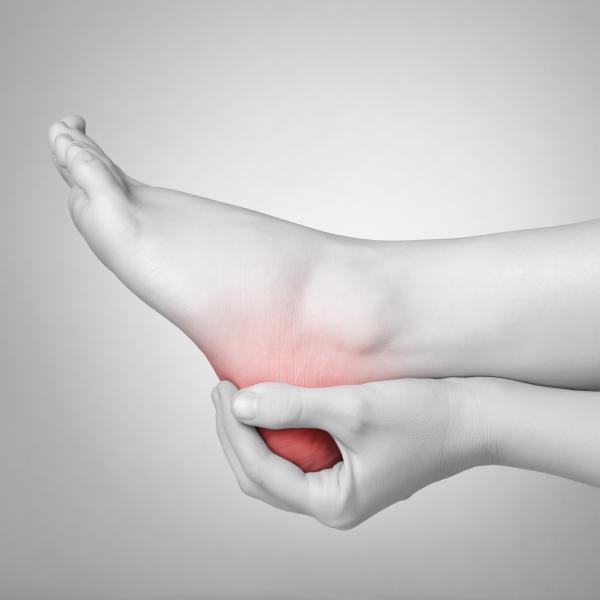
Our foot and ankle complex needs to be both dynamic and stable to allow for us to walk without stressing other areas in the body. The ankle may seem like a simple joint, but there are actually four bones that combine to provide the stability and motion necessary – tibia, fibular, talus, and calcaneus. The rest of the foot consists of multiple smaller bones that each must be able to withstand the movement and stress placed on it by the weight of our body. Your ankle is also an integral part of your daily function, as it is responsible for your ability to drive a car, climb stairs, and squat. If you suffer an injury to your foot/ankle it will likely become increasingly difficult to perform your normal activities without pain. The more knowledge we have regarding prevention and common causes of injuries, the better our chances are to avoid future injury.
Common Causes
Unfortunately, with the complexity of the foot/ankle joints it is often difficult to isolate a singular cause of injury. As with other body parts, increasing age leads to increased risk of injury from general wear and tear. After the ankle is injured there is a high likelihood that you can suffer another injury due to remaining deficits and/or poor healing.
- Overuse (Chronic) Injuries – With age and use cartilage can wear down and the ligaments, muscles, and tendons can become damaged.
- Sudden (Acute) Injuries – During a fall or other injury, the bones of the foot/ankle can be fractured. You can also have ligament tears and ruptures of the tendons.
Common Conditions
Foot/ankle pain can be caused by any one of these common conditions:
- Adult Acquired Flat Feet (Fallen Arches) – Fallen arch, or flatfoot, is known medically as pes planus. This is characterized as a loss in arch height in the foot. There are many causes of this disorder, but among the most common is decreased muscular strength. The muscles in the foot and ankle are required to help support the arch and if the weaken the arch can collapse
- Bone Fracture – There are multiple bones in the foot/ankle that can break and each needs to be managed differently. Most will require a period of not putting weight through the foot to allow for healing.
- Metatarsalgia – Athletes who run and jump a lot may be susceptible to metatarsalgia, a type of foot injury that results in pain and inflammation in the ball of the foot.
- Plantar Fasciitis – Affecting nearly 2 million Americans each year, Plantar Fasciitis is when there is an inflammation of the thick band of ligament that extends from the bottom of the heel to the toes (primarily the big toe).
- Calcaneal Bursitis – In the heel, bursitis may cause bruise-like pain mostly on the bottom of the heel, but also at the back of the heel. This pain is most often felt at the end of the day, especially for people who spend much of their time on their feet.
Injury Prevention
Kurt Gengenbacher, PT, DPT, OCS, SCS, CSCS, a Regional Director of Clinical Excellence, gives us some tips to help prevent and rehabilitate foot/ankle injuries:
- Stay Flexible – Make sure to stretch your calves daily. Hold those stretches for at least 30 seconds and repeat 2-3 times.
- Keep Your Foot Strong – Focus on functionally strengthening your foot. The foot must be able to assist in stabilizing the body while standing, so the best exercises are often in a standing position. Try to perform appropriate balancing tasks, standing toe crunches, heel raises, and toe raises.
- Avoid Overtraining – Make sure you vary your exercises and don’t always do the same thing. If you have pain after exercising, stop the activity, rest, ice and elevate your leg.
Rehabilitation
If you have pain in your foot/ankle that isn't going away, rehabilitation is a great step to take to improve your functionality. During rehabilitation:
- A Strong Foot Is A Healthy Foot – Working on strength in the small muscles of the foot (intrinsics) can help your ability to walk barefoot and on uneven surfaces.
- Be Balanced – Work on dynamic balance exercises to improve your proprioception and ability to stay upright.
- Don’t Let Tightness Be Your Achilles Heel – Stretching your ankles can help to improve your ability to go down stairs and squat.
- Stay On Your Toes – Strengthening of your calf muscles can help to improve your ability to walk, run, and climb stairs.
- Wear Proper Footwear – It is important to provide appropriate support to your foot.
When weighing your treatment options for foot pain and injuries, consider physical therapy. Physical therapy offers a wide variety of treatment options including strengthening, stretching, and sustainable home exercise programs. Stop in or call any ATI location for a complimentary injury screen or to learn more about how physical therapy can help you overcome your foot pain.
Put your best foot forward with ATI!
